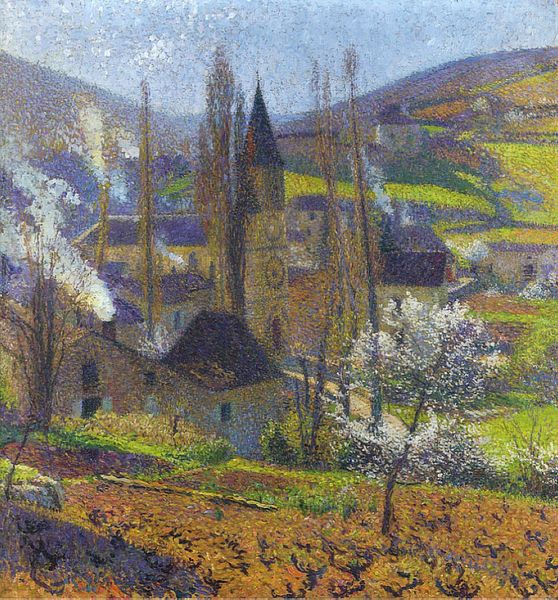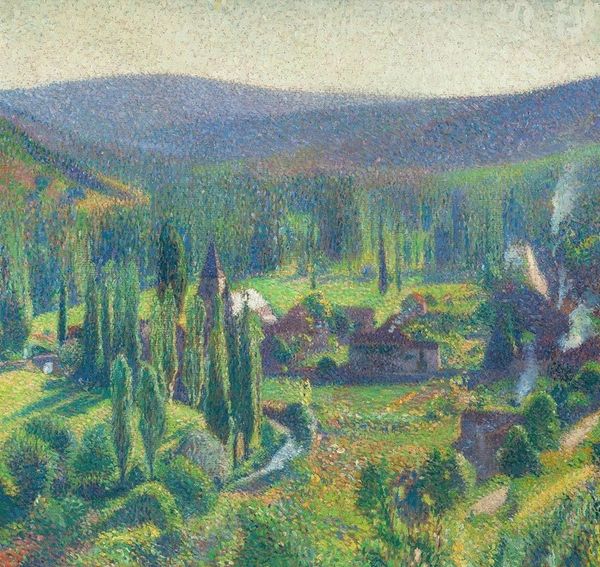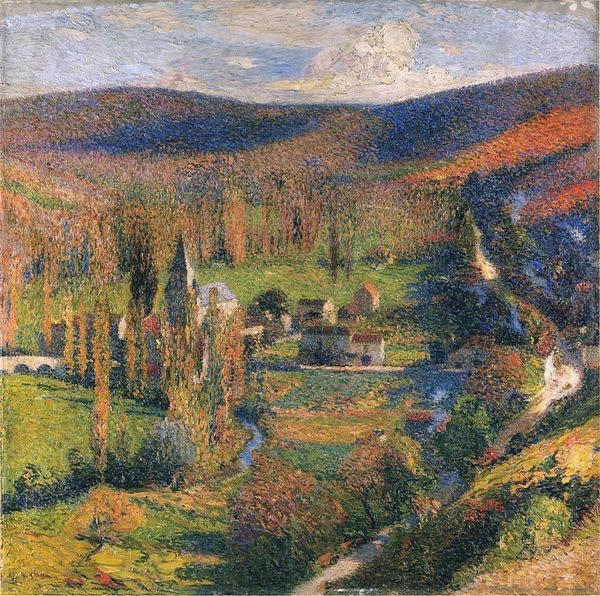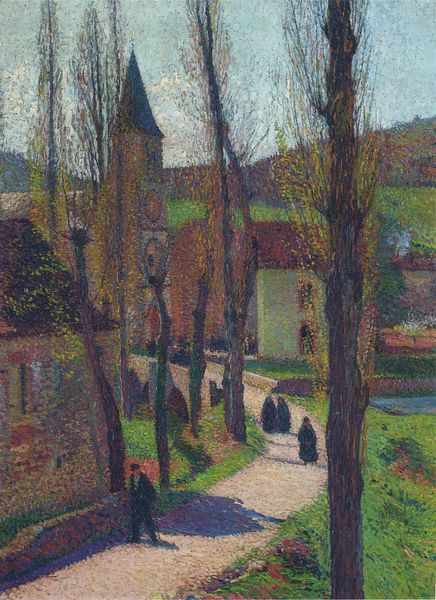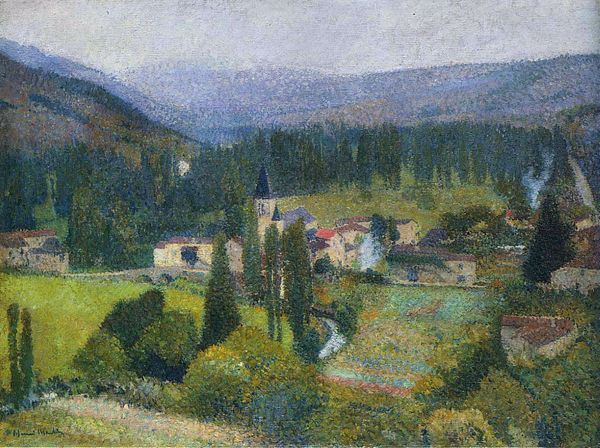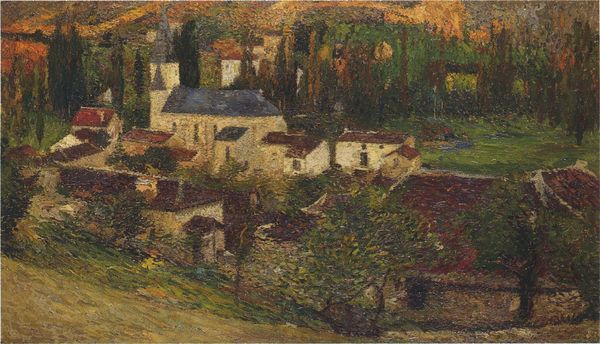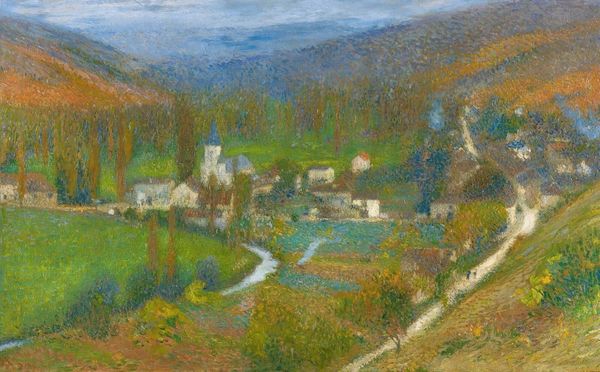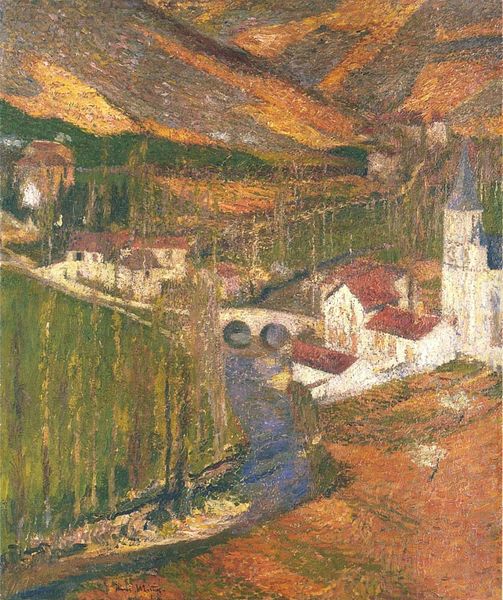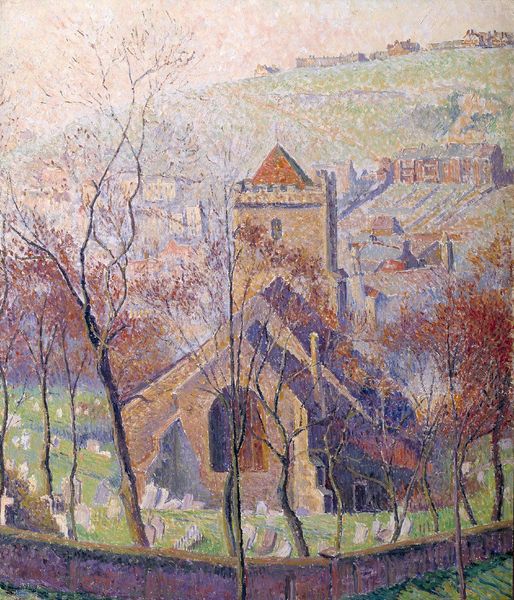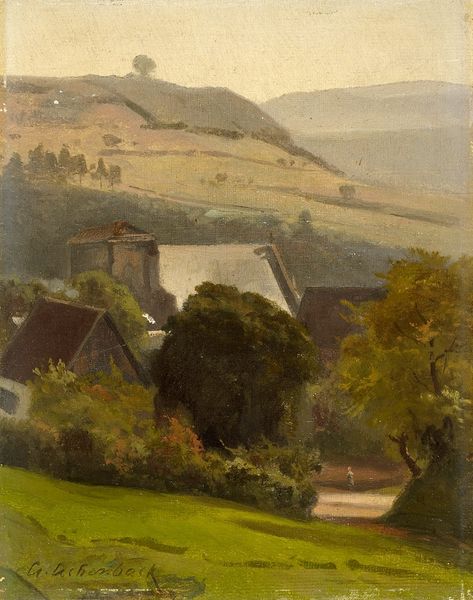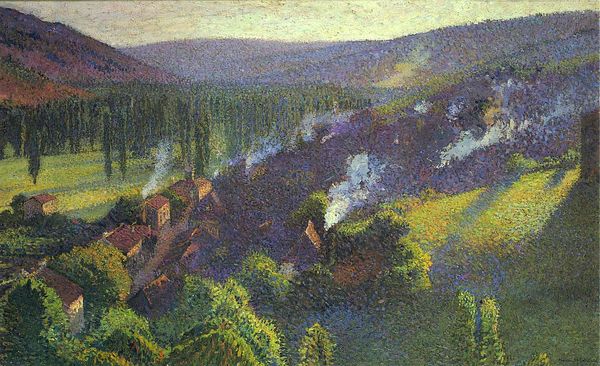
painting, plein-air, oil-paint
#
tree
#
cliff
#
painting
#
plein-air
#
oil-paint
#
landscape
#
house
#
impressionist landscape
#
oil painting
#
rock
#
forest
#
geometric
#
cityscape
#
post-impressionism
#
building
Copyright: Public domain
Editor: So, this oil painting is titled "Labastide du Vert near Presbytere," by Henri Martin. The date's unknown, but I see an "impressionist landscape." I’m immediately drawn to the way the earthiness of the scene contrasts with the delicate dabs of color used to depict the buildings. What strikes you when you look at this piece? Curator: What grabs my attention is the physical labor embedded in the painting’s subject matter and its making. Consider the figure in the foreground, toiling in the fields. Now think about Martin's own labor, the application of countless tiny strokes of oil paint. He's transforming raw materials into a commodity, an aesthetic object for consumption. How do you think that relates to the scene itself? Editor: Well, both are clearly processes of production, one agricultural and the other artistic. I guess it blurs the line between manual labor and high art, something I hadn’t really considered before. Curator: Exactly. And look at the way the painting style emphasizes the materiality of the paint. It’s not just about representing the landscape; it's about the very act of painting. These post-impressionists were actively rethinking the relationship between art, labor, and representation. Think of what materials he had available and the society to which the fruits of his, and the farmer's, labor cater. Does that help solidify the theme in your mind? Editor: It definitely does. It’s like the painting is not just showing us a place, but also telling us about how things are made and consumed, both in art and in life. Thanks, that's fascinating. Curator: Absolutely! It makes you think about the process and material behind not only the art but also life in general. It is fascinating.
Comments
No comments
Be the first to comment and join the conversation on the ultimate creative platform.

